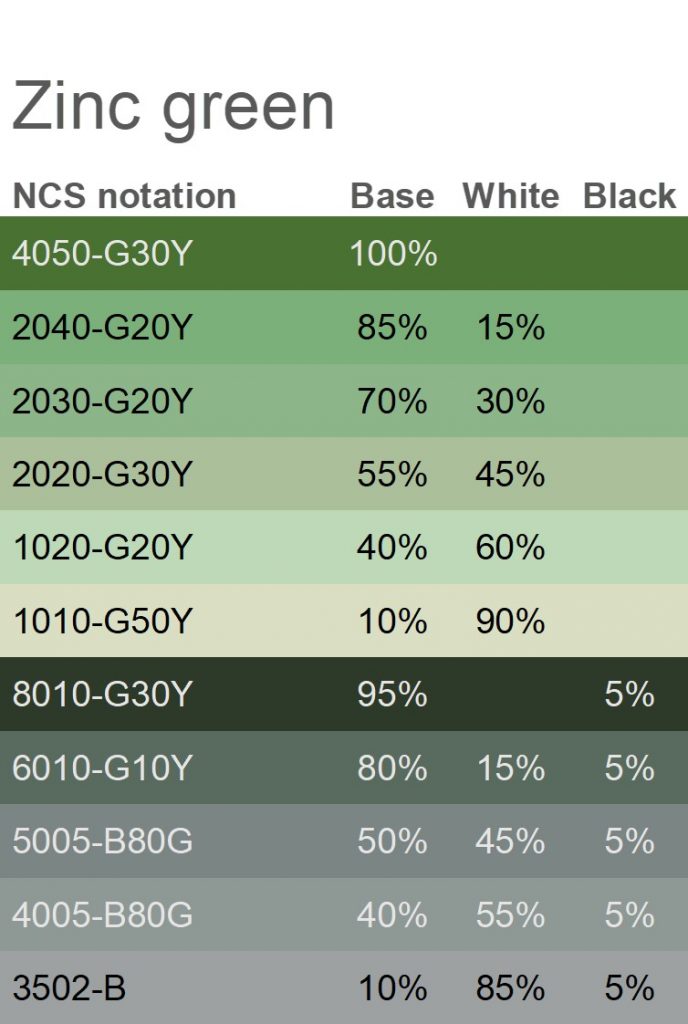
Zinc green
Zinc green is a pigment that gives bright green colours. It has a high degree of opacity but is not completely lightfast. It has mainly been used to paint smaller interior surfaces in buildings.
Zinc green is an ambiguous term. The name is used for different pigments, here we refer to the mixture of two pigments; zinc yellow and Prussian blue. Pigments with zinc compounds were developed from the beginning of the 19th century. Since it is a mixed pigment, the colours and other properties may vary depending on the proportion of the different ingredients. There are lighter and darker mixtures. The darker versions are more bluish and less bright than the lighter versions.
Compared to chromium oxide green the colour of zinc green is much brighter. Zinc green is, however, not completely lightfast, which is why it has mostly been used for painting smaller interior details in buildings.
Other green pigments in Kulturkulör: Chromium oxide green
Mixing chart
Kulturkulör’s mixing chart describes how you can mix traditional linseed oil paints to achieve specific colours. The chart shows the result of mixing ready-made paints and the parts are stated in percent by weight.
NCS – Natural Colour System®© is a logical colour system which builds on how the human being sees colour. The NCS notation makes it possible to describe the colours of all surface materials. You can read more about the NCS system here.

There are mixing charts for a selection of the colour samples in Kulturkulör. In the sample collection you can find more nuances that you can create with linseed oil paint and traditional pigments. The mixing charts will give you an idea of how the colour changes when mixing with white and in some cases when adding black. The mixing ratios are approximate and the properties of the pigments vary.
The mixing chart is colour coded to give an idea of the result of the mixture and what colours you can achieve with the traditional pigment, but keep in mind that the colour display varies between computer screens.
